
For the One-year Anniversary, I created a unique design of this post in a theme of a scientific article, check it out here!
Vietnamese version (bản tiếng Việt): click here!
Vietnamese coffee, in my humble opinion, is one of the best coffee in the world. We are lucky to grow both types of coffee beans, Robusta and Arabica in the middle region of Vietnam (Tay Nguyen region). In Vietnam, the coffee we drink daily mostly from Robusta beans, because it is much cheaper, while in Western countries, the coffee is mostly from Arabica beans. Consider the same roasting method, with the same extract condition, the coffee from Robusta beans has more caffein, darker and bolder, slightly bitter taste; while from Arabica beans, the coffee has less caffein, lighter color and the taste is a combination of less bitter and a bit of sour taste (Of course, darker roasted beans give darker color of the coffee but also less caffein). The dark color and bitter taste of coffee from Robusta make it perfect to drink it cold with some condensed milk or creamer, while with Arabica beans, it is best for hot, black coffee. In fact, espresso and/or instant coffee powder, or cheap Arabica beans usually have a portion of Robusta beans mixed together for a reduced cost. That helps explain why the instant black coffee powder was bitter.
Now, you might encounter different roasted level of the coffee indicated on package and wonder what you should pick. At the end of the day, it entirely depends on your taste and how you want to enjoy your coffee. If you want hot coffee so that you can fully enjoy the taste and aroma, light and medium roast are good picks. If you want to drink with milk or creamer, medium-dark and dark roast are the choices. Light roast beans would have the highest amount of caffein with a transparently light brown visual; dark roast beans would have the least amount of caffein with a bold dark brown visual (FYI, caffein sublimed due to high heat). A blend of light and medium-dark roast might suit your taste on strong coffee that could be enjoyed with milk/creamer.
Back to the main point of this post about Vietnamese coffee, when I ordered Vietnamese coffee from some Vietnamese restaurants/boba shop recently, I was disappointed because it was made of Vietnamese INSTANT COFFEE!! Although the Vietnamese instant coffee is also good but this cannot be called the well-known “Vietnamese coffee” name. If people order it and think, “Oh, so this is the quality of Vietnamese coffee.”, that would be quite an insult. Therefore, in this post, I would like to have a brief review on how we enjoy Vietnamese coffee at home.
(Making a true Vietnamese coffee is very easy, why didn’t they do so? FYI, we have Vietnamese and Asian markets that sell Vietnamese coffee in Arizona. They are also available on Amazon. Just keep wondering…)
Traditionally in Vietnam, coffee is extracted using a phin filter (“Phin”) or in a fine-mesh cloth strainer placed in a clay/aluminum kettle.
– With a phin filter to make “Cà phê phin”, ground coffee would be added inside the phin’s chamber and pressed down gently with the phin press just by dropping on top; place the coffee chamber on the holey plate, pour boiling water over, cover with the lid and not just wait for the coffee to drip. It is important to pack the ground coffee evenly, otherwise once the hot water is added, the press would floated when the volume of coffee increases due to absorbed water. Some phin is designed to have screw in it to help secure the press inside the chamber, I would recommend that.
– With the fine-mesh cloth strainer in a kettle to make “Cà phê vợt”, ground coffee is added into a special strainer which is a combination of fine-mesh cheesecloth attached on a hand-held strainer. The strainer is then placed inside a tall clay/aluminum kettle, and hot water would be poured over the coffee till desired volume. Make a quick stir to ensure all the ground coffee is in contact with hot water, then cover with a lid and let it brew till serving. The kettle can be placed on simmer to help extract more caffein and flavor from the coffee, and as a result, the coffee would be strong and have a bold taste (and might shock you).
(FYI, “coffee shock” happens when you drink more than the amount of coffee that your body could take. Common symptoms could be trembling, hyping, overreacting, headache, faster heart beat. I know because I experienced all of them.)
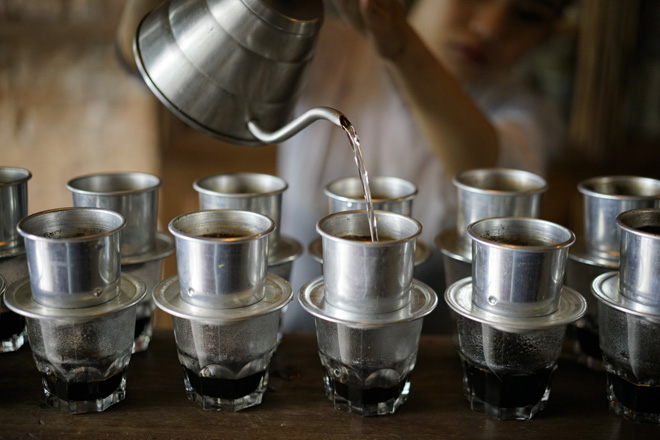
Credit: The Riv Coffee
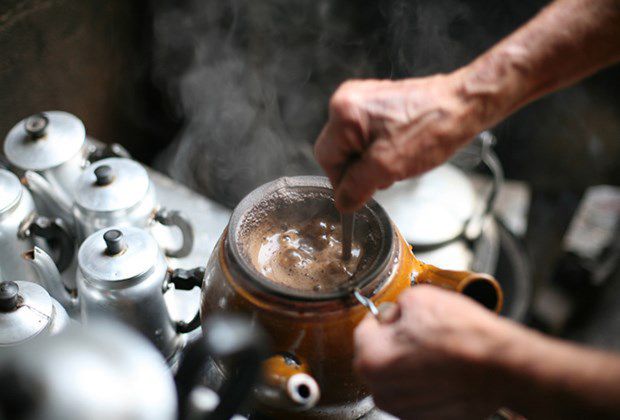
When brewing coffee at home, I usually use the Premium Blend or Creativity 4 (Sang tao 4) by Trung Nguyen Vietnamese coffee (photos below) for budget and quality. It has a nice blend of Robusta and Arabica that provides beautiful and long-lasting aroma with a hint of chocolate, good amount of caffein to wake your mind, a rich and soothing aftertaste. In terms of visual, it is transparently dark-brown. These blends are good options for your daily coffee, no matter you want to have hot or iced coffee, with or without creamer (I did made my own creamer, too).



For my convenient, I use a french press and a kettle (with fine-mesh reusable bags) to brew my coffee, which “simulate” the traditional style of “Cà phê phin” and “Cà phê vợt” mentioned above. This personal recipe uses 8 tablespoons of ground coffee for approximately 1 Liter of freshly filtered boiling water, good for 6 – 8 “cups of coffee” (approximately 4 – 5 oz or 120 – 160 mL of coffee per serving) or just 3 – 4 servings if you drink a lot of coffee like me…haha…!
- In a 1-Liter French press (a standard 8-cup size): Add the ground coffee into the French press, then pour ~ 250 mL of boiling water till the coffee is just immersed in the water. Let it sit (with lid covered) for 5-10 minutes. Then, remove the lid and pour the boiling water to the maximum line of your French press, cover with lid and let it brew till serving. When serving, gently press down the mesh and pour the beautiful coffee into your favorite cup. Add creamer, sweetener and ice to taste.
- In a 1-Liter kettle: Add the ground coffee into reusable coffee bag(s), and place the bags into a coffee kettle. Pour ~250 mL of boiling water into the kettle, cover with the lid and place the kettle on low heat for 15 – 20 minutes. After that, turn off the heat, remove the lid and add the remaining boiling water to the coffee kettle and put the lid back. Let it brew till serving. When serving, pour your stunning coffee directly from the kettle into your favorite cup. Add creamer, sweetener and ice to taste.
- Note for storage: Close to the end of the French press and the kettle, a lot of residue is mixed in the coffee but could be removed using coffee filter paper. Recommend to store coffee in a glass bottle inside a refrigerator (to avoid the coffee becomes sour and stains on a plastic container). I honestly don’t know how long it could last in the refrigerator since I finish it with in 2 days so… Guess that you can do some little research and let me know then!
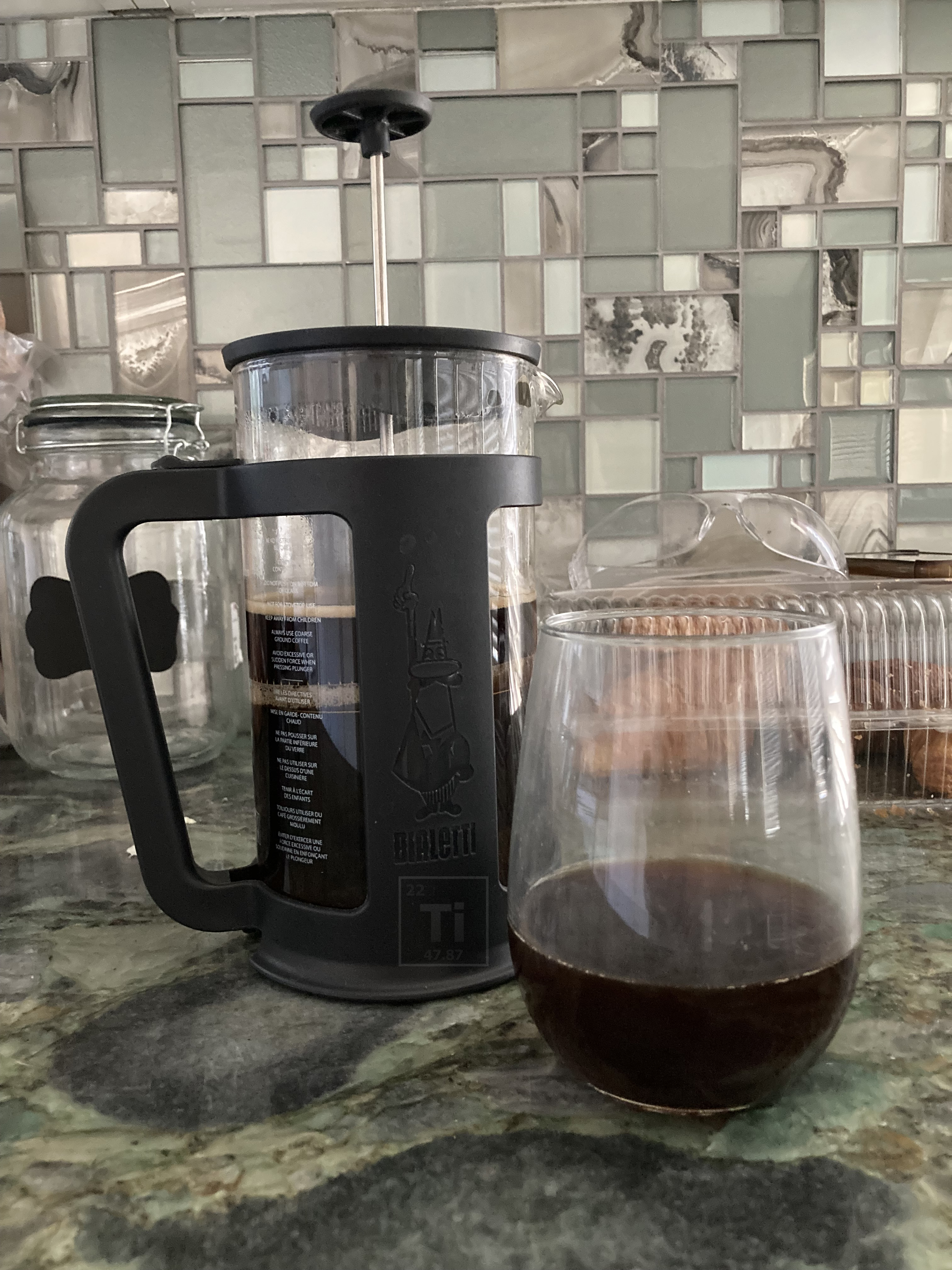


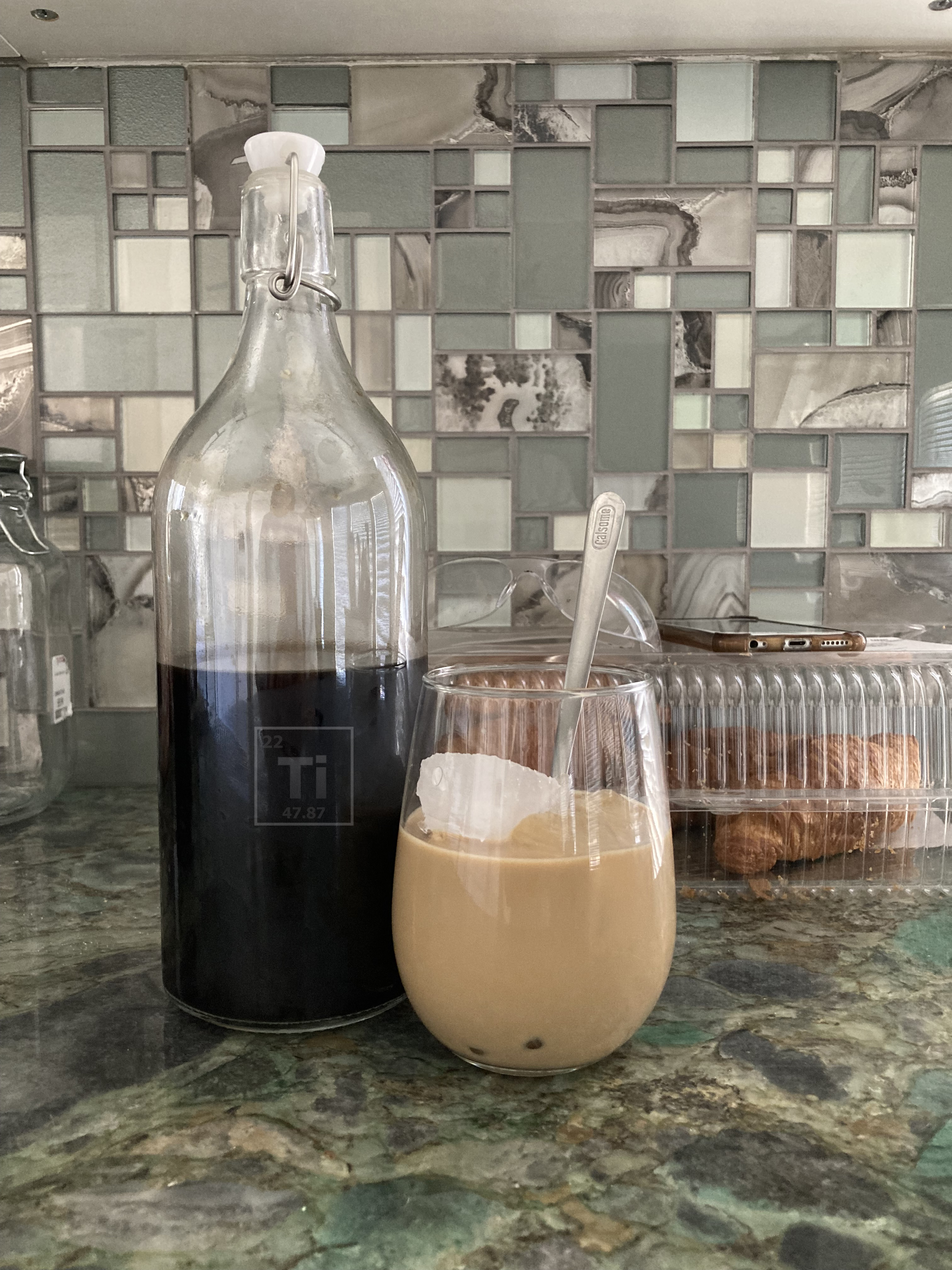
For an authentic Vietnamese coffee:
– Vietnamese iced coffee (“Cà phê đen đá”, “Đen đá”): add 1 teaspoon of sugar per “1 cup of coffee”, stir until dissolved. Add ice to taste and enjoy!
– Vietnamese milk coffee (“Cà phê sữa đá”, “Nâu đá”): add 1 – 2 tablespoons of condensed milk per 1 “cup of coffee”, stir until dissolved. Add ice to taste and enjoy! (like in photos below)




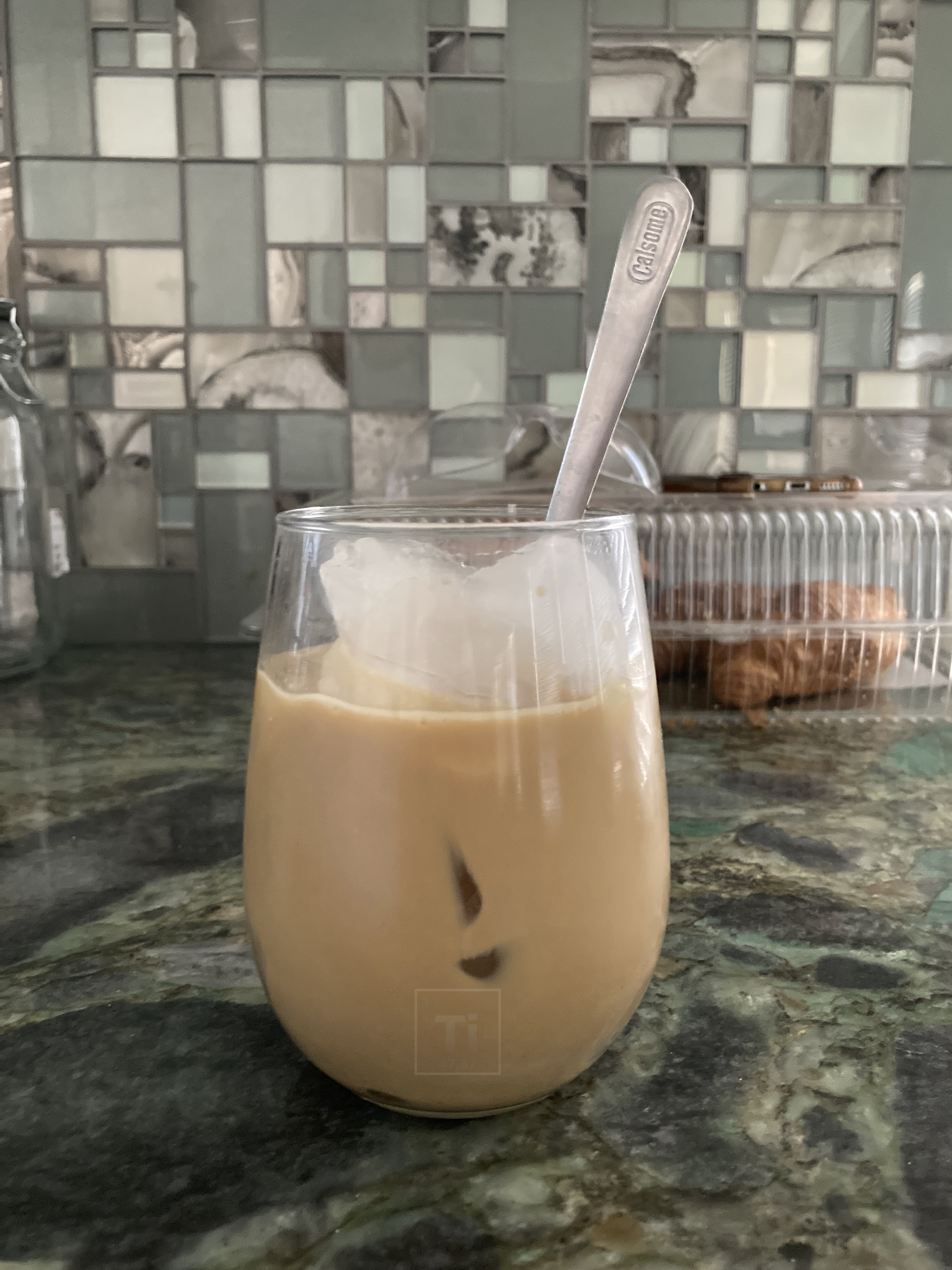
Other useful resources on coffee:
- 4 Types of Coffee Beans: Profiles, Pictures & More! by Kate MacDonnell
- What is a Vietnamese Phin Filter? (And How to Use It) by The Nguyen Coffee Supply
- 4 Types of Coffee Roasts (Explained with Images) by Coffee Affection
Woohoo! You made it to the end of this long post! A round of applause for you and your interest in coffee! Hope your coffee would always be great! ☕️😊

How do you take your coffee? It’s truly definitely “seriously, very seriously!” 😂
I can totally see how much you love coffees with that post. When you love sth so much, it’s so easy to see with every letter in the post. I’m sure other coffee-lovers would love this post so much!!!
Btw, it’s so sad that I can’t drink coffee or tea. But luckily, I can still smell it without coffee shock 😂
LikeLiked by 1 person
Thank you though! I’m very serious about coffee… even my professor approved… haha!
My friends from middle school told me that I should get a PhD degree in coffee instead lol!
And who can resist that beautiful aroma of coffee, right?
LikeLiked by 1 person
Yepp the aroma of coffee is truly beautiful 🤩
LikeLike